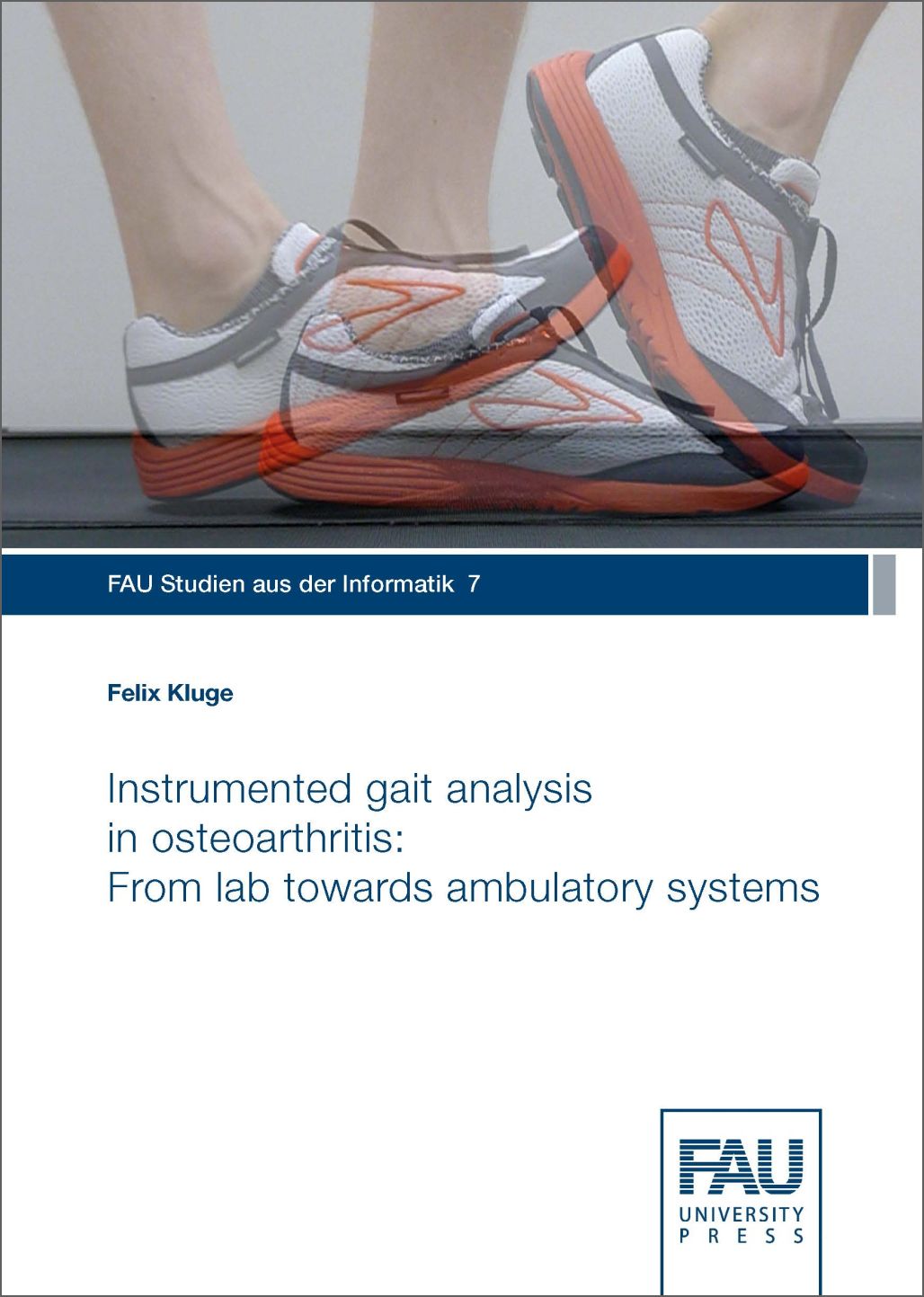Description
Knee osteoarthritis (OA) is a progressive disease characterized by the degeneration of articular cartilage of the knee joint. Symptoms include pain, functional limitations and specifically gait dysfunction, all of which severely affect quality of life. In order to understand the causes and effects of pathological gait symptoms and to optimize intervention management, refined methods for the assessment of gait and its impairment are necessary. However, objective functional gait measures are commonly not assessed in clinical practice, but rather subjective patient reported outcome measures are used for clinical evaluation and intervention assessment.
The first main goal of this thesis was to apply state-of-the-art methods of human gait analysis using infrared cinematography to the following biomechanical gait analysis questions. The identification of sub phases of the gait cycle has previously been suggested in literature as they contain important biomechanical information. However, the corresponding gait sub phase model has so far only been static as it included no gait speed dependency. This model was extended in this thesis, allowing the interpretability regarding gait speed changes. It was applied to gait data of OA patients undergoing total knee arthroplasty (TKA) and compared to gait of healthy subjects. Normalizing dependencies of gait phase durations on speed after surgery were found. Furthermore, biomechanical analysis was applied to clarify potentially confounding factors regarding laterally wedged insoles which can be used as a non-invasive intervention in early OA stages. Although cinematography is considered the gold standard in movement analysis, its use for gait assessment in clinical routine is limited due to high costs and operational efforts. Recently, mobile sensor-based systems have been introduced as a promising tool for the efficient acquisition of movement characteristics and gait limitations in various diseases including OA. They have the potential to be better applicable in clinical routine use and for real world gait assessment. The second main goal of this thesis was therefore the validation and clinical application of such a foot-worn sensor-based system. First, concurrent validity and test--retest reliability was assessed regarding commonly used gait parameters. Very good agreement with an optical motion capture reference system and high reliability was achieved. Second, this system was applied to a clinical population of OA patients undergoing TKA. Discriminative ability of the sensor-based system comparable to laboratory systems was observed. Due to the diverse inter-individual functional responses after surgery, no global effects of TKA on gait parameters were present. However, separating the patient group into positively and negatively responding patients allowed a highly accurate prediction of whether patients' gait improved or aggravated after surgery based on pre-operative gait parameters. This underpins the sensitivity of mobile body-worn systems to detect small treatment effects without the use of extensive laboratory systems.
In summary, the main contributions of this thesis are the extension of the gait phase model, the evaluation of non-invasive interventions regarding confounding factors, as well as the validity evaluation and clinical application of a mobile gait analysis system. The findings are beneficial for the domain of OA intervention research and for the integration of objective and ambulatory gait analysis into clinical practice.


Reviews
There are no reviews yet.